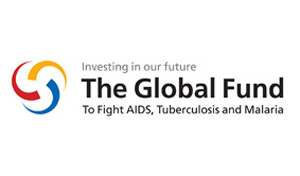The Global Fund to Fight AIDS, Tuberculosis and Malaria
In December 2010, The Global Fund to Fight AIDS, Tuberculosis and Malaria granted $33 million for medical male circumcision programs (VMMC} in South Africa.[1]
| “ | Health Minister Dr. Aaron Motsoaledi (South Africa) Of the previous grants we have received from the Global Fund, this is the highest amount. It covers, for the first time treatment and also includes health systems strengthening and scaling up of medical male circumcisions. (The Government of South Africa)[2] |
Contents
Circumcision does not prevent HIV infection
Population-based studies
September 2021 saw the publication of two huge population studies on the relationship of circumcision and HIV infection:
- Mayan et al. (2021) carried out a massive empirical study of the male population of the province of Ontario, Canada (569,950 males), of whom 203,588 (35.7%) were circumcised between 1991 and 2017. The study concluded that circumcision status is not related to risk of HIV infection.[3]
- Morten Frisch & Jacob Simonsen (2021) carried out a large scale empirical population study in Denmark of 855,654 males regarding the alleged value of male circumcision in preventing HIV and other sexually transmitted infections in men. They found that circumcised men have a higher rate of STI and HIV infection overall than intact men.[4]
No association between lack of circumcision and risk of HIV infection was found by either study. There now is credible evidence that the massive, expensive African circumcision programs have not been effective in preventing HIV infection.
Two African surveys
The previously reported studies were from developed Western nations. Now we have information from Sub_Saharan Africa.
French scientist Michel Garenne, Ph.D. has published two reports in 2022 comparing the incidence of HIV infection in circumcised and intact men.
In his first report, Garenne presented the findings from a study in Lesotho, the enclave in South Africa. He reported:
In couple studies, the effect of circumcision and VMMC on HIV was not significant, with similar transmission from female to male and male to female. The study questions the amount of effort and money spent on VMMC in Lesotho.[5]
In his second report, Garenne (2022) presented information from six Sub-Saharan African nations (Eswatini, Lesotho, Malawi, Namibia, Zambia, Zimbabwe). He reported:
"Results matched earlier observations made in South Africa that circumcised and intact men had similar levels of HIV infection."[6]
References
- ↑
 (20 December 2010).
(20 December 2010). More funds for SA to fight Aids
, BuaNews. Retrieved 21 May 2011.
Quote:$33 million for medical male circumcision
- ↑ The Government Communication and Information System. (2010, December 20). More funds for SA to fight Aids.
- ↑
 Mayan M, Hamilton RJ, Juurlink DN, Austin PC, Jarvi KA. Circumcision and Risk of HIV Among Males From Ontario, Canada. J Urol. 23 September 2021; PMID. DOI. Retrieved 21 August 2022.
Mayan M, Hamilton RJ, Juurlink DN, Austin PC, Jarvi KA. Circumcision and Risk of HIV Among Males From Ontario, Canada. J Urol. 23 September 2021; PMID. DOI. Retrieved 21 August 2022.
Quote:We found that circumcision was not independently associated with the risk of acquiring HIV among men from Ontario, Canada.
- ↑
 Frisch M, Simonsen J. Non-therapeutic male circumcision in infancy or childhood and risk of human immunodeficiency virus and other sexually transmitted infections: national cohort study in Denmark. Eur J Epidemiol. 26 September 2021; 37: 251–9. PMID. DOI. Retrieved 16 January 2022.
Frisch M, Simonsen J. Non-therapeutic male circumcision in infancy or childhood and risk of human immunodeficiency virus and other sexually transmitted infections: national cohort study in Denmark. Eur J Epidemiol. 26 September 2021; 37: 251–9. PMID. DOI. Retrieved 16 January 2022.
- ↑
 Garenne M. Changing relationships between HIV prevalence and circumcision in Lesotho. J Biosoc Sci. 4 April 2022; online ahead of print: 1-16. PMID. DOI. Retrieved 7 November 2022.
Garenne M. Changing relationships between HIV prevalence and circumcision in Lesotho. J Biosoc Sci. 4 April 2022; online ahead of print: 1-16. PMID. DOI. Retrieved 7 November 2022.
- ↑
 Garenne M. Age-incidence and prevalence of HIV among intact and circumcised men: an analysis of PHIA surveys in Southern Africa. J Biosoc Sci. 26 October 2022; : 1-13. PMID. DOI. Retrieved 7 November 2022.
Garenne M. Age-incidence and prevalence of HIV among intact and circumcised men: an analysis of PHIA surveys in Southern Africa. J Biosoc Sci. 26 October 2022; : 1-13. PMID. DOI. Retrieved 7 November 2022.
